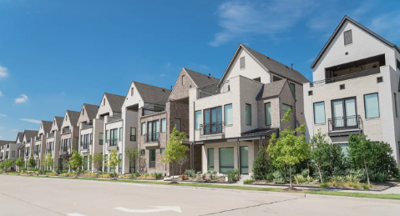
Build-for-rent (BFR) subdivisions have rapidly become a prominent segment of North America’s housing landscape. Instead of constructing homes for sale, developers are building entire neighborhoods of single-family residences specifically for long-term rental. This model blends the familiarity of suburban living with the flexibility of renting, appealing to both institutional investors and residents seeking stability without ownership obligations.
For prospective residents exploring flexible housing arrangements, opportunities such as condo rentals Vaughan highlight how BFR developments are influencing local rental markets. These communities cater to tenants who desire privacy, amenities, and community continuity—elements historically reserved for ownership-based subdivisions.
How the Build-for-Rent Model Works
The BFR model is driven by the convergence of investor demand and housing affordability challenges. Developers construct homes within master-planned subdivisions and lease them to tenants under unified management. Institutional investors fund these projects because they generate predictable, long-term rental income streams, often with lower vacancy rates than urban multifamily properties.
The scale of these developments allows for professional management, standardized maintenance, and shared community amenities. Tenants benefit from neighborhood cohesion, while investors benefit from operational efficiency and economies of scale. However, unlike traditional multifamily developments, BFR projects must balance neighborhood aesthetics and leasing logistics within suburban zoning frameworks.
Legal and Zoning Complexities
From a legal standpoint, BFR subdivisions challenge conventional zoning categories. Many municipalities lack specific designations for large-scale rental subdivisions, leading developers to navigate gray areas between multifamily and single-family zoning codes. This ambiguity can complicate permitting, financing, and resale planning.
Homeowners’ associations (HOAs) and local councils sometimes oppose BFR projects, arguing they alter community character or strain local infrastructure. In response, developers increasingly negotiate development agreements that impose tenant screening, maintenance standards, and occupancy rules to mirror traditional ownership neighborhoods.
Financial and Tax Implications
Financially, BFR communities appeal to institutional investors for their stable yields. However, the upfront capital requirements are substantial. Land acquisition, horizontal infrastructure, and vertical construction costs mirror those of for-sale projects but without immediate unit sales revenue. Developers depend on lease-up velocity and long-term rent growth to achieve target returns.
Tax treatment also differs. Since homes are retained as income-generating assets, developers qualify for depreciation benefits but forgo the immediate capital gains that come from property sales. This structure requires more complex accounting and longer investment horizons. Investors evaluating BFR portfolios must weigh income stability against opportunity cost and liquidity limitations.
Market Risks and Rewards
The main advantage of BFR subdivisions lies in their resilience. During economic downturns, rental demand often remains stable or increases as homeownership becomes less accessible. Yet, the same developments face exposure to rising property taxes, interest rate fluctuations, and evolving rent control legislation.
Moreover, tenant turnover, deferred maintenance, and operational inefficiencies can erode net operating income. A well-managed BFR subdivision mitigates these risks through technology-driven management systems, predictive maintenance, and tenant retention programs. Poorly managed communities, on the other hand, can deteriorate quickly and depress neighboring property values.
Policy and Regulatory Outlook
Governments are beginning to evaluate how to regulate and support BFR housing. Some jurisdictions are encouraging it as a solution to supply shortages, while others fear it may crowd out individual ownership opportunities. Policymakers are considering measures such as tax incentives for mixed-tenure developments or inclusionary zoning to require affordable units within rental subdivisions.
Municipalities also grapple with the long-term implications of investor ownership. Concentrated rental portfolios can impact community engagement and voting participation, raising broader social questions about neighborhood identity and equity.
Build-for-rent subdivisions represent both innovation and disruption in real estate. They offer investors stable income potential and provide tenants with suburban living without ownership burdens. Yet, they also raise legal, financial, and social questions about community structure and market balance. As the model continues to expand, understanding its risks and rewards will be critical for policymakers, developers, and residents shaping the next phase of housing evolution.


(0) comments
We welcome your comments
Log In
Post a comment as Guest
Keep it Clean. Please avoid obscene, vulgar, lewd, racist or sexually-oriented language.
PLEASE TURN OFF YOUR CAPS LOCK.
Don't Threaten. Threats of harming another person will not be tolerated.
Be Truthful. Don't knowingly lie about anyone or anything.
Be Nice. No racism, sexism or any sort of -ism that is degrading to another person.
Be Proactive. Use the 'Report' link on each comment to let us know of abusive posts.
Share with Us. We'd love to hear eyewitness accounts, the history behind an article.